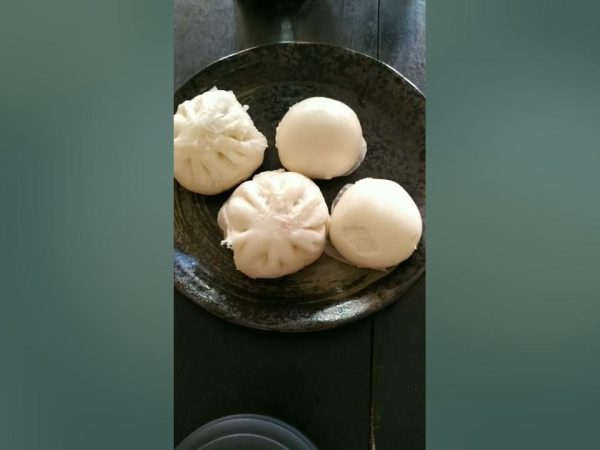The cheese pasty, a beloved pastry with a golden, flaky crust and a gooey, savory cheese filling, has long been a staple in many kitchens. Mastering the art of making cheese pasties with a perfectly crispy crust is a coveted skill. Whether you’re an experienced baker or just getting started, achieving that ideal crispiness requires some expert techniques. In this article, we’ll explore ten proven hacks to help you achieve cheese pasties mastery, ensuring every bite is a delightful experience.
Use Cold Ingredients for a Flakier Cheese Pasty
The foundation of a crispy cheese pasty lies in the dough. To achieve a flakier texture, it’s crucial to use cold ingredients. Begin with chilled butter and ice-cold water when preparing your pastry dough. The cold fat creates pockets of steam as it melts during baking, which leads to a flakier texture. Avoid overworking the dough to prevent it from becoming too tough. Simply mix until the dough just comes together, then chill it again before rolling out. This method will ensure a light, airy crust that is the hallmark of a perfect cheese pasties.
Cheese pasty: Chill the Dough and Fillings
Another essential tip for achieving a perfectly crispy cheese pasty is to chill both the dough and the fillings. After preparing your dough, wrap it in plastic wrap and refrigerate it for at least 30 minutes. This not only helps the dough to firm up but also makes it easier to roll out. Similarly, if your cheese filling is particularly moist, chillin will help it hold its shape better during baking, preventing excess moisture from making the crust soggy.
Preheat Your Oven for Optimal Crispiness
A well-preheated oven is crucial for a crispy cheese pasty. Set your oven to the recommended temperature, usually around 375°F (190°C), and let it fully preheat before placing your pasties inside. An adequately heated oven ensures that the crust begins to cook immediately, forming a crispy exterior. Avoid opening the oven door frequently, as this can cause temperature fluctuations that might affect the crispiness of your pasties.
Use a Baking Sheet with Parchment Paper
When baking your cheese pasties, the type of baking sheet you use can impact the final result. Opt for a heavy-duty baking sheet and line it with parchment paper. This prevents the pasties from sticking to the sheet and ensures even heat distribution. Parchment paper also helps in achieving a crispier crust by allowing any excess moisture to evaporate, which keeps the bottom of the pasties from becoming soggy.
Brush the Crust with Egg Wash
For a beautifully golden and crispy cheese pasty, apply an egg wash to the surface before baking. An egg wash, made by whisking together an egg with a tablespoon of water or milk, adds a rich, golden color and enhances the crispiness of the crust. Simply brush a thin layer of the egg wash over the top of your pasties right before they go into the oven. This technique not only improves the appearance but also helps to seal the edges, preventing the filling from leaking out.
Avoid Overfilling
While it’s tempting to load up your cheese pasties with generous amounts of filling, overfilling can lead to a soggy crust. Too much filling can cause the pastry to become heavy and the excess moisture to seep into the dough. Stick to a moderate amount of filling, allowing space around the edges for proper sealing and crisping. Properly proportioned filling ensures that the cheese pasty maintains its ideal texture and flavor balance.
Use High-Quality Cheese
The quality of the cheese you use directly affects the taste and texture of your cheese pasty. Opt for high-quality cheese that melts well and has a robust flavor. Cheddar is a popular choice for cheese pasties due to its sharpness and melting properties. Experiment with different types of cheese or combinations to find your perfect flavor profile. Using premium cheese enhances the overall experience of the cheese pasties, contributing to a richer taste and more satisfying texture.
Bake on the Middle Rack
The placement of your baking sheet in the oven can influence the crispiness of your cheese pasty. Bake your pasties on the middle rack to ensure even cooking. This position allows for optimal heat circulation around the pasties, promoting an evenly crispy crust. Avoid placing the baking sheet on the top or bottom racks, as this can result in uneven browning and affect the texture of the crust.
Allow the Pasties to Cool on a Wire Rack
Once your cheese pasties are out of the oven, resist the urge to cut into them immediately. Allow them to cool on a wire rack for a few minutes before serving. Cooling on a wire rack prevents the bottom of the pasties from becoming soggy due to trapped steam. The airflow around the pasties ensures that the crust remains crispy and that the filling firms up to the ideal consistency.
Experiment with Different Flours
The type of flour you use can impact the texture of your cheese paste. While all-purpose flour is commonly used, experimenting with different types of flour can yield interesting results. For example, using a mix of all-purpose flour and cake flour can create a lighter, more delicate pastry. Alternatively, adding a small amount of whole wheat flour can add a slightly nutty flavor and additional texture. Don’t be afraid to experiment with various flour combinations to find the one that produces your perfect cheese pasty crust.
Conclusion
Achieving cheese pasty mastery requires attention to detail and a few expert techniques. By incorporating these ten proven hacks into your baking routine, you’ll be well on your way to creating perfectly crispy cheese pasties every time. From using cold ingredients and chilling your dough to brushing with egg wash and experimenting with different flours, these tips will help you elevate your cheese pasties game. Embrace the process, enjoy the journey, and savor the delicious results of your perfectly crispy cheese pasties.
FAQs
Q1. What is the best type of cheese for cheese pasty?
The best cheese for cheese pasties is one that melts well and has a strong flavor. Cheddar is a popular choice due to its sharpness and excellent melting properties. You can also experiment with other cheeses like Gruyère, mozzarella, or a blend for different flavors.
Q2. Can I make cheese pastry dough in advance?
Yes, you can make cheese pastry dough in advance. Prepare the dough, wrap it tightly in plastic wrap, and refrigerate it for up to 48 hours. You can also freeze the dough for up to three months. Just make sure to thaw it in the refrigerator before rolling out.
Q3. How do I prevent my cheese paste from becoming soggy?
To prevent a soggy cheese paste, make sure to avoid overfilling, use a baking sheet with parchment paper, and bake the pasties on the middle rack. Additionally, allow the pasties to cool on a wire rack to avoid steam buildup.
Q4. Can I use a different type of flour for cheese pastry dough?
Yes, you can use different types of flour to experiment with the texture of your cheese pasties dough. While all-purpose flour is standard, mixing it with cake flour or whole wheat flour can yield different results. Try various combinations to find what works best for you.
Q5. How can I make my cheese pasties extra golden and crispy?
To achieve extra golden and crispy cheese pasties, apply an egg wash to the surface of the pasties before baking. The egg wash adds color and helps the crust become crispier. Ensure your oven is preheated to the correct temperature and bake on the middle rack for optimal results.
Also read: Paprika Chips: 10 Exciting Ways to Spice Up Your Snack Game













